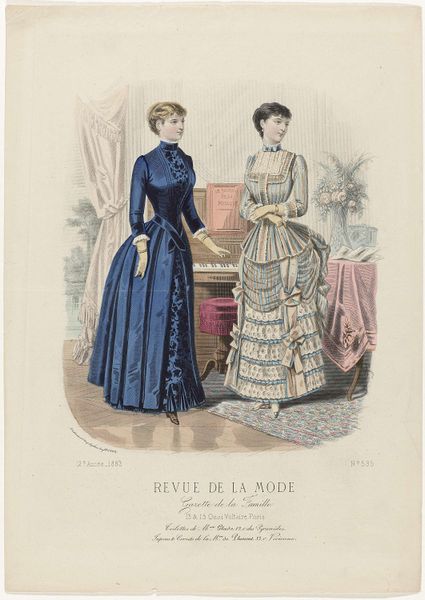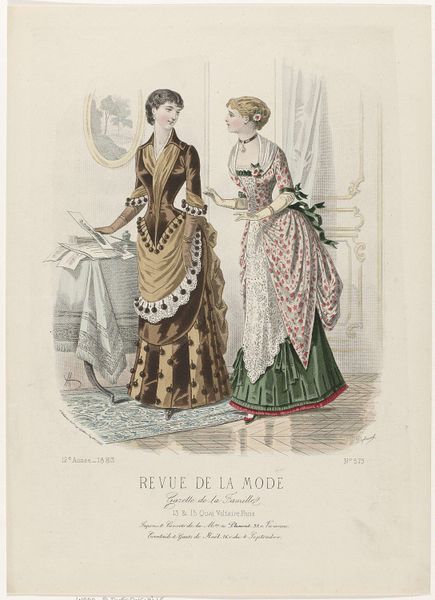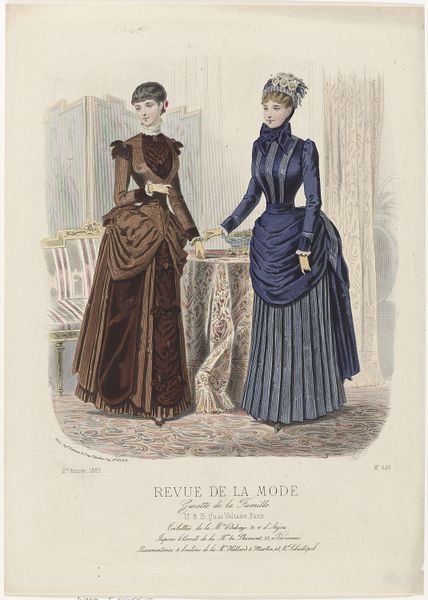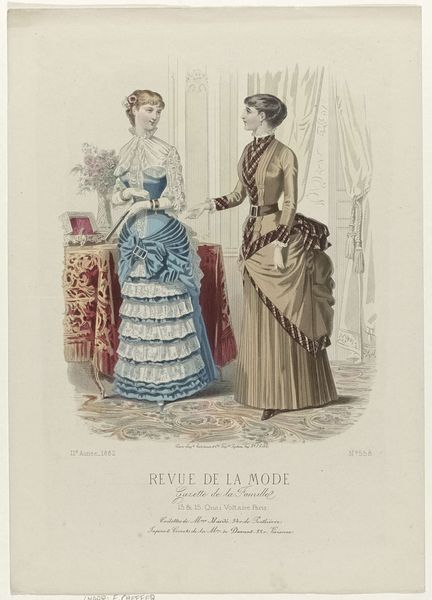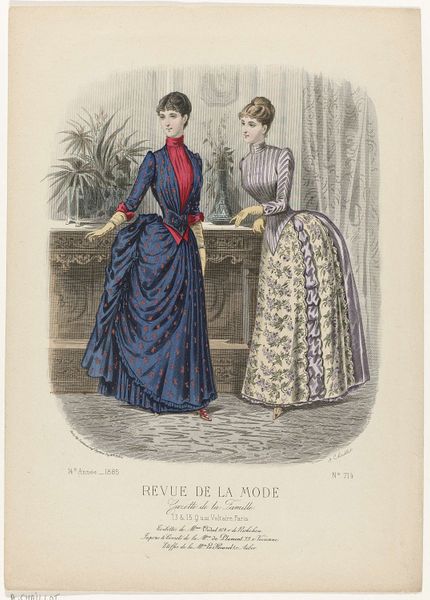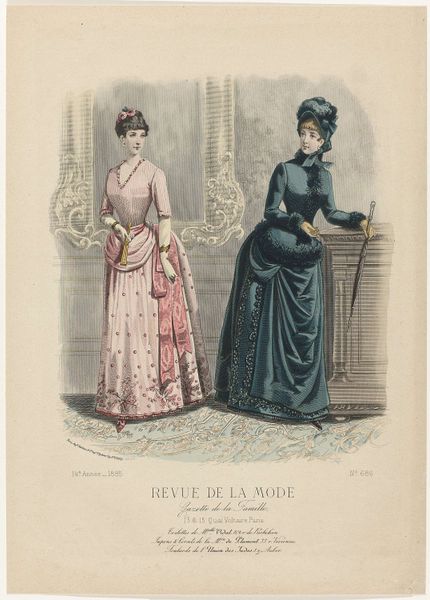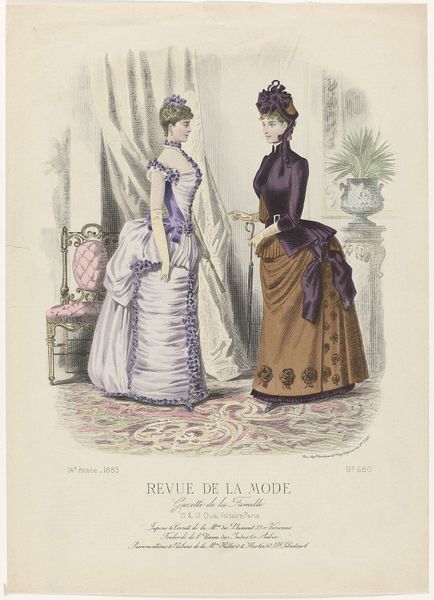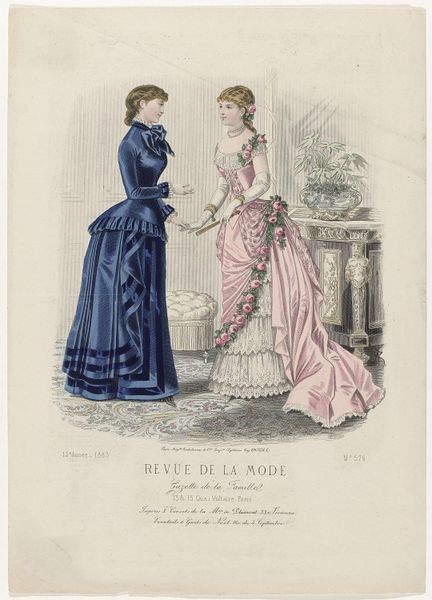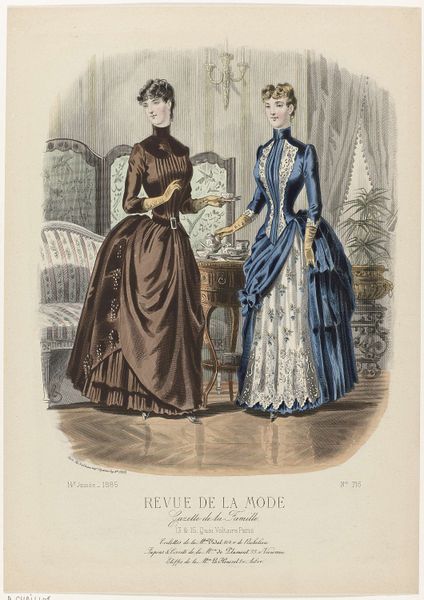
Revue de la Mode, Gazette de la Famille, dimanche 11 mars 1883, 12e annee, No. 584: Toilettes de Mme Delannoy (...) 1883
0:00
0:00
Dimensions: height 375 mm, width 268 mm
Copyright: Rijks Museum: Open Domain
Curator: Looking at this 1883 print titled "Revue de la Mode, Gazette de la Famille", immediately the painstaking detail suggests so much work, especially the elaborate dresses. The process behind producing these kinds of fashion plates for mass consumption—that’s where the story begins. Editor: Yes, immediately striking is that while supposedly representing "fashion," it's steeped in rigid social codes around women’s presentation. I find these types of documents often inadvertently lay bare expectations around feminine performance. Curator: Precisely. The dresses weren’t just aesthetic objects; they were manufactured objects employing textile workers, printers, and colorists. We see the output of a complex industry providing the aspirational visuals of the latest trends. Look at the way the watercolor illustration is translated into print - considering the technologies of the time. Editor: And consider how these "trends" dictated labor. The garment industry in the 19th century, was rife with exploitation, predominantly affecting working-class women who produced these elaborate designs for upper-class consumption. What power structures are reflected and entrenched? Curator: Absolutely, we can also examine the source. This illustration, created by A. Chaillot, originally appeared in a publication that functioned as both fashion guide and a chronicle of domestic life, targeting middle-class women. These periodicals drove consumption, a proto form of today's marketing. Editor: It is so clearly instructional too, isn’t it? Think about the readers interpreting this illustration: aspiring to a prescribed lifestyle while also constrained by a rapidly changing economy. They are caught in a visual vortex of possibility and impossibility. Curator: But notice also the technical choices. The pen work to create the initial forms, combined with delicate application of watercolour gives the designs volume but they remain easily reproducible. Every material decision feeds into accessibility. Editor: For sure, seeing past the surface beauty opens these pieces to critical re-evaluation; revealing not just style, but societal power plays and gendered inequalities perpetuated through fashion, art, and its means of production. Curator: And in looking critically at fashion plates like this one we unveil systems that affect us still. We must question the labour practices involved in the making, consumption, and the dissemination of aspirational fashion ideals to disrupt the current model. Editor: By unpacking all of the material circumstances around fashion we can develop an even richer awareness of this history.
Comments
No comments
Be the first to comment and join the conversation on the ultimate creative platform.
